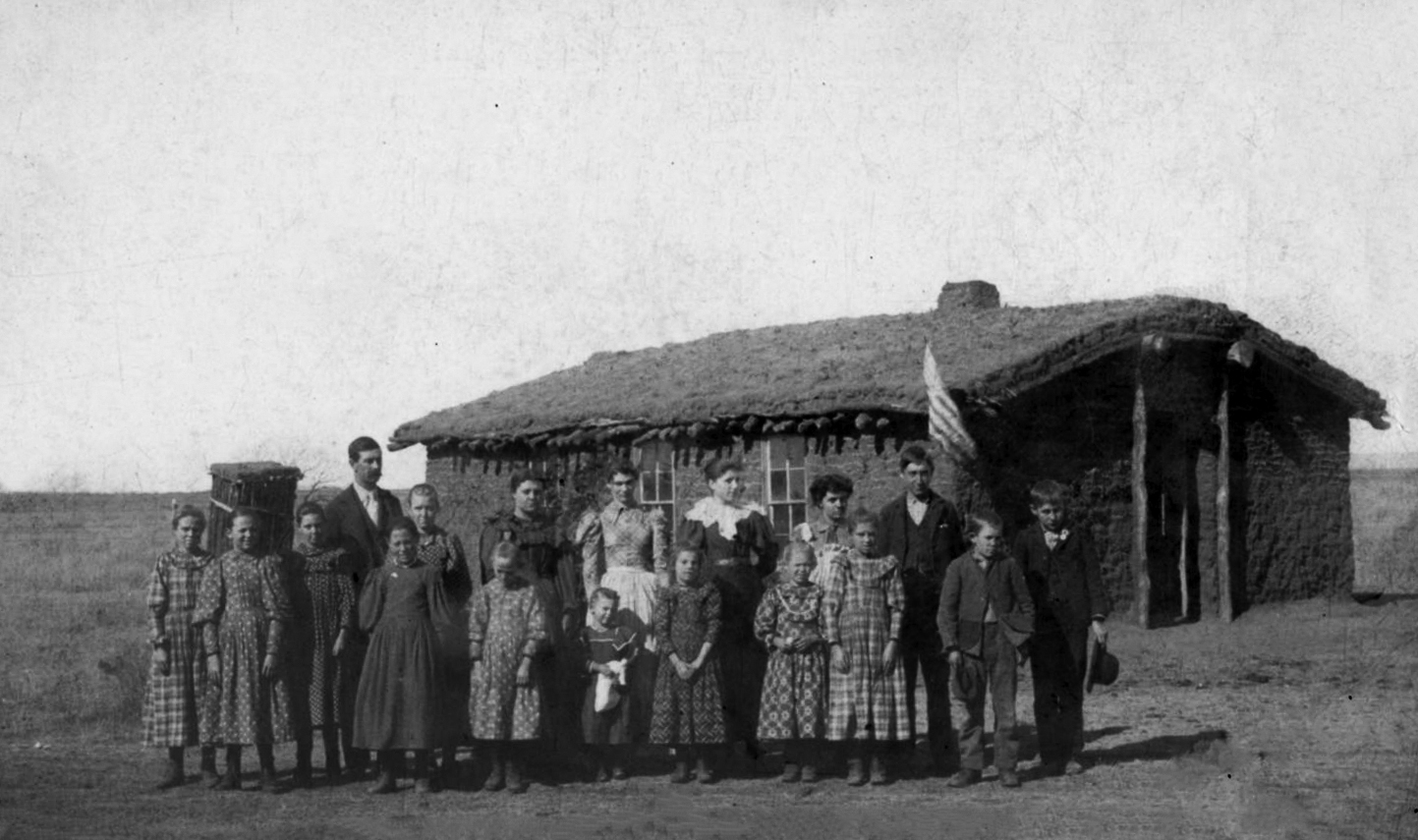
Oklahoma Education
Printable Version
From teachers managing one-room schoolhouses during territorial times to the expansion of educational opportunities for Oklahomans of all racial and economic backgrounds during the twentieth century, Oklahoma’s education system became more inclusive, accessible, and accountable over the course of history.
Early Oklahoma
Before statehood, students usually attended one of the three types of schools: subscription, mission, or tribal. Each school used their own techniques to educate children.
The most common type of school in the 1800s was called a subscription school. Typically, parents made payments (around a dollar per child each month) to the school’s teacher. With the money, the teacher bought supplies and rented a location to teach. Sometimes the locations turned out to be tents, dugouts, and churches.
The one-room schoolhouses included basic supplies such as desks with holes for inkwells. The rooms had no air conditioning, one central heater, and outside bathrooms, called outhouses. The students, in grades one through eight, shared the class and teacher. Imagine having to be in class with your older or younger sibling all day! The subjects studied usually consisted of reading, writing, arithmetic, history, and geography. The students would memorize and recite their lesson.

Students and school (2008.148.035.202, William Edson Photograph Collection, OHS).

Sod house school (67531, J. O. Walker Collection, OHS).
The Oklahoma Education Association
Eleven teachers met in Oklahoma Territory (Guthrie) in October 1889, six months after the first land run. The teachers created an organization that would last for more than a century. The eleven teachers (known as the Oklahoma Teachers Association) paired with the Indian Territory Teachers Association and became known as the Oklahoma Education Association (OEA) in 1918.
The OEA worked to improve teacher pay and school funding, to provide a retirement plan for teachers, and to furnish a better education plan for students. They also fought for compulsory attendance, uniform textbooks, and school consolidation.

